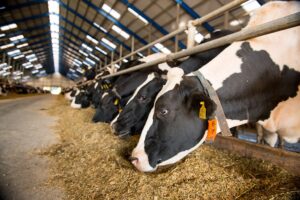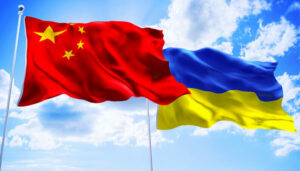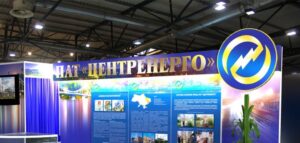
Astarta, Ukraine’s largest sugar producer, has commissioned another building for keeping heifers aged two to six months in the Poltava region as part of a large-scale reconstruction of dairy farms, the agricultural holding’s press service reported.
“This is part of a major infrastructure renewal program that Astarta continues to implement throughout 2025. The company is modernizing farms, introducing new animal husbandry technologies, improving energy efficiency, and working to improve livestock genetics. In total, Astarta invested about UAH 543 million in this area during the 11 months of 2025. Last year, about UAH 300 million was invested in the reconstruction and modernization of the industry,” the agricultural holding said, adding that these measures are aimed at increasing production efficiency.
The building has been reconstructed in compliance with requirements for room layout, animal density, microclimate, and sanitary and hygienic conditions, which reduce dependence on external resources and make the farm more autonomous.
Astarta systematically invests in upgrading livestock infrastructure, improving animal welfare, applying modern technologies, and increasing energy efficiency. The opening of each new facility is another step towards strengthening the competitiveness of our livestock farming, implementing good animal welfare practices, and strengthening the company’s production base,” said Yaroslav Kushnir, Director of Astarta’s Livestock Department.
The company is convinced that systematic work on the development of livestock farming yields stable results — the agricultural holding remains the largest producer of industrial milk in Ukraine.
Astarta is a vertically integrated agro-industrial holding operating in eight regions of Ukraine and the largest sugar producer in Ukraine. It includes six sugar factories, agricultural enterprises with a land bank of 220,000 hectares and dairy farms with 22,000 head of cattle, an oil extraction plant in Hlobyn (Poltava region), seven elevators, and a biogas complex.
In the first half of 2025, Astarta reduced its net profit by 10.3% to EUR47.11 million, and its consolidated revenue decreased by 29.3% to EUR320.71 million.

Agricultural production in Ukraine fell by 6.6% in January-November 2025 compared to the same period last year, according to the State Statistics Service.
Thus, according to the results of 11 months of this year, the agricultural production index was 93.4% compared to January-November last year. In particular, the indicator for crop production reached 92.7%, and for livestock production – 96.2%.
Agricultural enterprises suffered slightly greater losses, with production at 93.2% of last year’s level. At the same time, the indicator for crop production reached 92.0%, and for livestock production – 100%. At the same time, the indicator for private farms was 93.7%. For crop production, it was 99.8%, and for livestock production, 90.4%.
The largest decline in production was recorded in the Donetsk region, where this index was 57.4% of last year’s level. There was also a significant decline in the Kherson (70.1%) and Dnipropetrovsk (79.3%) regions.
At the same time, two regions showed positive dynamics: in the Chernihiv region, the agricultural production index rose to 102.2%, and in the Vinnytsia region, to 101.6%.

This week (December 15-21), the crypto market experienced fluctuations without a clear trend: after a slump at the beginning of the week, Bitcoin remained in the $87-89 thousand range, and investors switched back to a wait-and-see mode due to the macro agenda, mixed dynamics of ETF flows, and a seasonal decline in liquidity ahead of the holidays.
Bitcoin gained about 1.6% (at closing) between December 15 and December 21, but there was a noticeable V-shaped movement during the week: selling pressure in the $85,000–86,000 range was offset by rebounds to $88,000–89,000.
Ethereum remained virtually unchanged over the same period (close to zero at closing), staying around the $3,000 mark, but with noticeable intraday fluctuations.
Sentiment remained subdued: fear and greed indices showed “Extreme Fear” for most of the week, which usually amplifies sharp movements in a thin market.
The key external factor was expectations regarding US interest rates and year-end risk-off sentiment. In December, the Fed cut rates by 25 basis points to 3.5-3.75%, while the market interpreted its rhetoric as more cautious about further steps.
Against this backdrop, any hint of a pause or a tighter rate trajectory weighed on risk appetite, as evidenced by the reaction of crypto assets at the beginning of the “last full week of the year.”
The second theme is institutional flows. According to reports and market news, there were inflows and noticeable outflows from BTC and ETH ETFs during the week (investors often “close” risk or lock in results at the end of the year), which added volatility and increased dependence on news.
The third line is that “traditional finance” continues to tokenize, but this is still more of an infrastructure trend than an immediate price driver. For example, JPMorgan announced the launch of a tokenized money market fund on the Ethereum blockchain, supporting the long-term narrative around real assets on-chain.
Even during a calm week in terms of prices, reminders of the risks were loud and clear: research on crypto crime and isolated incidents in DeFi underscore that “operational risk” (vulnerabilities, deployment errors, key management) remains a key vulnerability for the industry.
Fixygen’s short-term forecast until the end of 2025
Until December 31, the base scenario is sideways movement with an increased likelihood of sharp spikes due to low liquidity during the holidays and reduced institutional activity. Important triggers for the rest of the year are ETF flow dynamics, any surprises from US macro statistics and Fed rhetoric, plus local stories about major players in the public market (there is also growing attention around the classification of companies with large crypto reserves).
Regarding risks: during the “holidays,” the influence of thin trading and liquidations increases — movements may be disproportionate to the news.

First Deputy Minister of Foreign Affairs of Ukraine Serhiy Kyslytsya discussed ways to strengthen trade and economic cooperation between the two countries with Deputy Minister of Foreign Affairs of China Liu Bin in Beijing.
“In Beijing, First Deputy Minister of Foreign Affairs Serhiy Kyslytsya held Ukrainian-Chinese political consultations with Assistant (Deputy) Minister of Foreign Affairs of the People’s Republic of China Liu Bin,” according to a statement from the press service of the Ministry of Foreign Affairs.
According to the report, the parties discussed topical issues on the bilateral agenda, outlined plans for further contacts at the highest and high levels, discussed ways to strengthen trade and economic cooperation, and issues of interaction within international organizations.
The interlocutors confirmed that mutual respect for sovereignty and territorial integrity is the foundation of Ukrainian-Chinese relations.
“There was an in-depth exchange of views on the current situation related to the ongoing armed aggression of the Russian Federation against Ukraine, as well as international efforts to achieve sustainable and lasting peace,” the statement said.
As part of his working visit to Beijing, Kislitsya also met with representatives of Chinese expert and analytical circles, as well as the diplomatic corps of partner countries.

Centrenergo PJSC plans to end 2025 with a net profit of approximately UAH 4.5 billion after many years of losses, according to Andriy Gota, chairman of the company’s supervisory board.
“This year, Centrenergo should end with financial results that have not been achieved for decades. This is approximately UAH 4.5 billion in net profit. The company’s previous managers accumulated losses of UAH 16 billion over 20 years,” Gota said in an interview with the Energorforma internet portal.
He noted that the company has not reported losses since July 2024.
“The company also repaid almost UAH 2.5 billion in debts from previous periods, including to state-owned mines and Naftogaz, and stopped accumulating them,” said the head of the NR.
According to him, at the same time, the debt of NEC Ukrenergo to the company in the balancing market amounts to UAH 2.2 billion, having doubled compared to last year’s figure.
As reported, Centrenergo is the operator of the Trypilska TPP in the Kyiv region and the Zmiivska TPP in the Kharkiv region. The company’s Vuhlehirsk TPP in Donetsk region has been occupied since mid-summer 2022. The first massive strike on the Trypilska TPP took place in April 2024, and on the Zmiivska TPP in December 2022.
The current supervisory board was appointed in August 2023. At that time, it appointed Andriy Churkin, former director of PJSC “Kharkivenergosbyt,” as chairman of the board of Centrenergo, who was replaced in July 2024 by the company’s technical director, Yevhen Harkavyi.
Applications for the competition to select candidates for the supervisory board of Centrenergo are being accepted until December 23: three independent members and two state representatives. In an interview, Gota said that he would not apply to participate in this competition and would leave the company.

Following a meeting with Portuguese Prime Minister Luís Montenegro, Ukrainian Prime Minister Yulia Svyrydenko announced the country’s first contribution to the Energy Support Fund for Ukraine in the amount of EUR600,000.
“During the meeting, the Prime Minister of Portugal announced the first contribution to the Energy Support Fund for Ukraine in the amount of EUR600,000. We highly appreciate this step by our partners,” the Telegram message said.
The parties also discussed Portugal’s defense support for Ukraine, in particular through the PURL and SAFE mechanisms, as well as the Build in Ukraine and Build with Ukraine initiatives, which have significant potential for developing cooperation, particularly in the field of joint drone production.
In the context of preparations for the next Conference on the Reconstruction of Ukraine, the parties agreed to work on the conclusion of an intergovernmental agreement (G2G) to promote the involvement of Portuguese business and investment in the Ukrainian market.
“I also emphasized to the Prime Minister that Ukraine is grateful to the leaders of the European Union for their decision to provide Ukraine with EUR 90 billion in funding over two years — this is incredibly important assistance for Ukraine,” the Prime Minister stressed.